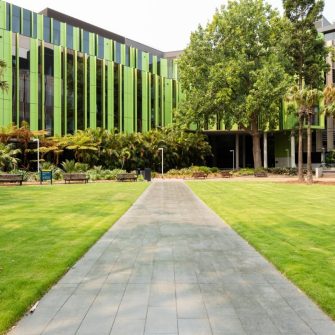Office of Assurance and Integrity
Safety

Chemicals are classified as hazardous or non-hazardous in accordance with set criteria by safe work Australia.
Some chemicals can be dangerous goods. That is they poses an immediate physical hazard to health, property and the environment.
A wide range of substances, medicines and poisons are also controlled under the department of health regulations these substances can be found on a poisons list and they are divided into eight different groups called poison schedules. For example, S4 drugs are prescription-only medicines.
Hazardous chemicals
-
- HS628 List of Schedule 14 chemicals requiring health surveillance, opens in a new window
- HS687 List of other chemicals to be considered in a health surveillance program, opens in a new window
- HS622 Organic Peroxide forming chemicals, opens in a new window
- HS621 List of Common Unstable Chemicals, opens in a new window
- HS620 Explosives and SSAN Guide, opens in a new window
- Asbestos
Dangerous goods
-
- HS625 Generic Controls for Storage of Dangerous Goods, opens in a new window
- HS680 Schedule 11 placard & manifest quantities, opens in a new window
- HS619 A list of Dangerous Goods classes with examples, opens in a new window
- HS428 At a glance look at Dangerous Goods classes, opens in a new window
- HS623 Dangerous Goods Compatibility Matrix, opens in a new window
- HS624 Examples of Dangerous Goods that are incompatible with each other, opens in a new window
-
- HS605 Dangerous Goods Storage Checklist Template, opens in a new window
- HS606 Flammable Liquid Cabinet Storage Checklist, opens in a new window
- HS607 Flammable Liquid Roofed Storage Checklist, opens in a new window
- HS608 Oxidising Store Cabinet Storage Checklist, opens in a new window
- HS609 Corrosive Cabinet Storage Checklist, opens in a new window
- HS610 Cryogen Cabinet Storage Checklist, opens in a new window
- HS611 Toxic Cabinet Storage Checklist, opens in a new window
Global Harmonised System
Scheduled drugs & carcinogens
-
- Please see RECS, opens in a new window
Weblinks
-
- Link to Australian Standards website: (Link, opens in a new window)
- WorkCover NSW: (Link, opens in a new window)
- ThermoFisher Scientific online Safety Data sheets (Link, opens in a new window)
- UN Globally Harmonized System of Classification and Labelling of Chemicals (GHS) For GHS Revision 4 classification and criteria (Link, opens in a new window)
- Safe Work Australia: Hazardous Chemical Information System (HCIS) (Link, opens in a new window)
- CCID (Chemical Classification and Information Database) : New Zealand: For information on chemicals classified in accordance with the GHS under the Hazardous Substances and New Organisms (HSNO) regulations (Link, opens in a new window)
- eChemPortal : OECD: Information on physical and chemical properties, environmental fate and behaviour, ecotoxicity and toxicity of substances. Classification according to GHS provided when available (Link, opens in a new window)
- UN Model Regulations (transport of dangerous goods) : UN. For Internationally agreed classification criteria for dangerous goods. Does not contain information for health hazards except acute toxicity categories 1, 2 and 3 (Link, opens in a new window)
- GESTIS – Substance Database : Germany. Information for the safe handling of hazardous chemicals at work (health effects, necessary protective measures, first aid), and on physical and chemical properties (Link, opens in a new window)
- GHS Converter website. A European resource which helps translate from existing hazard classifications into the GHS system. (Link, opens in a new window)
- 2020 UNSW Biological and Facility Register
- AED
- Asbestos
- Biological
- Building
- Chemical
- Confined Space
- Contractor Safety
- Electrical
- Fieldwork
- Gene Technology
- Hazardous Manual Tasks and Ergonomics
- Laboratory Safety
- Lasers
- Nanomaterials
- Noise
- Personal Protective Equipment (PPE)
- Plant
- Radiation
- Travel
- Visitors
- Working After Hours
- Working at Height
- Working environment



